Between two Great Migrations and multiple episodes of “white flight” Black people began to carve out their place in America. Over generations, some even helped develop their own Black affluent neighborhoods, comparable to white ones.
Today, there are many well-to-do Black neighborhoods in America, but which one of these communities is the top of them all - a modern-day “Promised Land” in which our people thrive?
10. Cedar Hill, Texas.
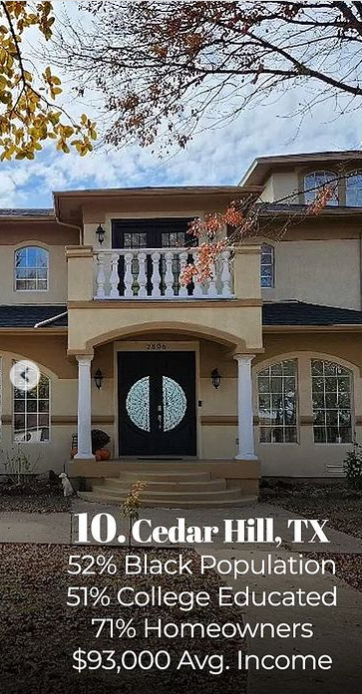
One of many Dallas suburbs, Cedar Hill, Texas boasts a Black, college-educated population of just over 50 percent. Even better, nearly three quarters of black Cedar Hill residents own their homes, with a $93,000 average income.
The cost of living is rather agreeable, at only six percent above the national average. With the cost of housing and groceries at least five percent below the national average, an affluent Black family just starting out can realistically live a more than sensible life in this Dallas suburb.
10. Randallstown, Maryland.
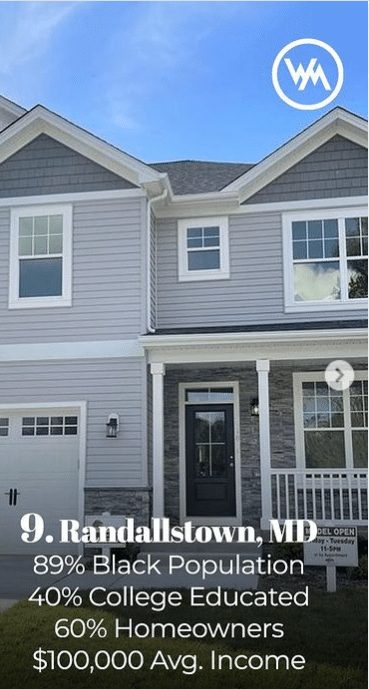
A preferable alternative to the tumultuous Baltimore, Randallstown, Maryland features a 40 percent college-educated population, with 60 percent of Black residents owning their homes, at a $100,000 average income, similar to Cedar Hill, Texas. However, Randallstown blows Cedar Hill out of the water in terms of its Black population, at a whopping 80 percent.
Black Randallstown residents also have higher education levels than other cities in Maryland, with almost 40 percent having at least a bachelor’s degree or better; 95 percent of residents work in careers in tech or STEAM.
8. Stone Mountain, Georgia.
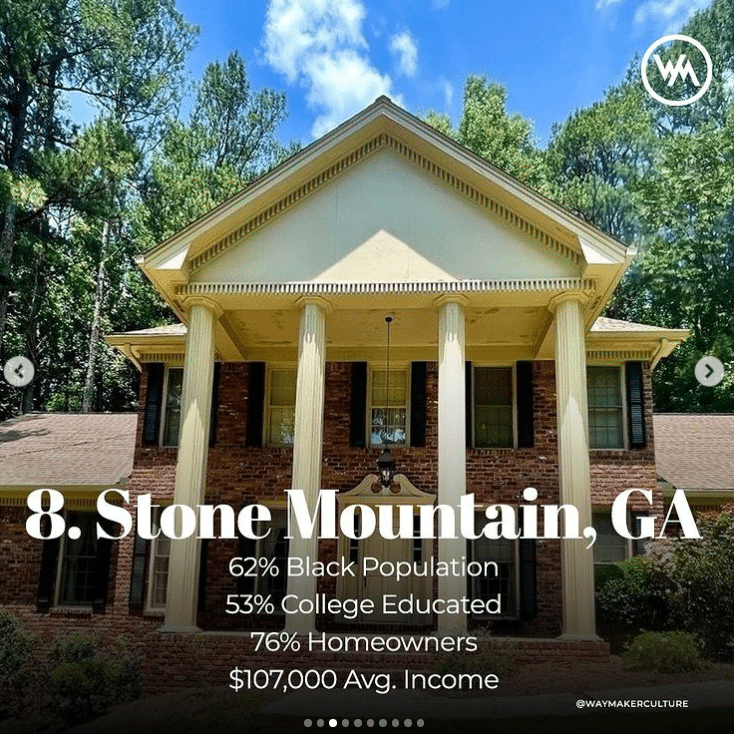
A suburb of Atlanta, Stone Mountain features a 62 percent Black population. Fifty-three percent of Black Stone Mountain residents are college-educated, with a $107,000 average income. In 2022, median property values were $162,700, just about the average income of Black residents.
The cost of living in Stone Mountain, Georgia hovers just below the national average, at four percent. What's the draw for upwardly mobile Black people to Stone Mountain? Expenses like housing, utilities, and transportation are notably lower than the national average, at 12, 16, and 8 percent, respectively.
7. Florissant, Missouri.
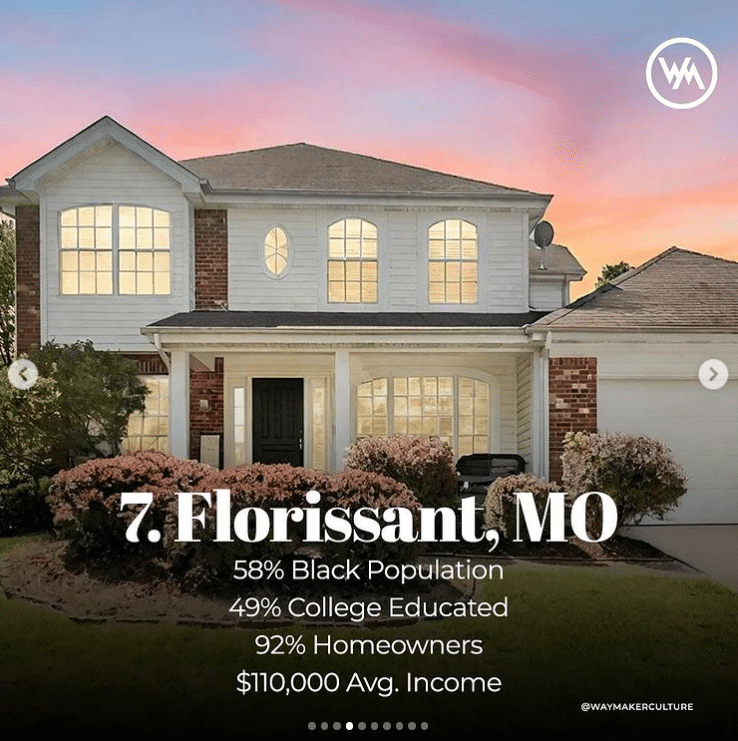
A second-ring suburb of St. Louis, Florissant has a nearly 60 percent Black population, 49 percent of which are college educated. Exceptionally diverse and wealthy the average income of black Florissant residents is $110,000, and 92 percent of those residents own their homes.
Florissant also promotes an enticing cost of living at nine percent lower than the national average overall, attracting well-to-do Black residents to start their American dream.
6. Bloomfield, Connecticut.
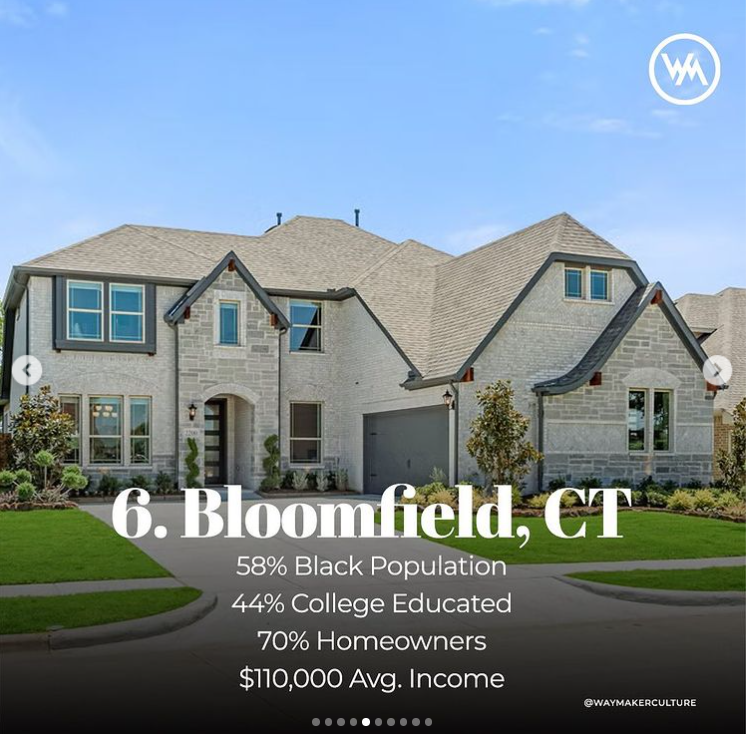
Just outside Hartford, Connecticut, Bloomfield also has a nearly 60 percent Black population, similar to Florissant, Missouri. With an overall 21 percent higher educated population, 44 percent of Bloomfield’s Black residents are college-educated. The average income of Black Bloomfield residents is $110,000, and 70 percent of them own their homes.
Bloomfield provides a quiet respite away from the bustling city of Hartford, Connecticut. The diversity, friendly neighbors, great education system and beautiful countryside are just some of what attracts wealthy Black residents who yearn to raise a family in a safe and stable environment.
5. Cambria Heights, New York.
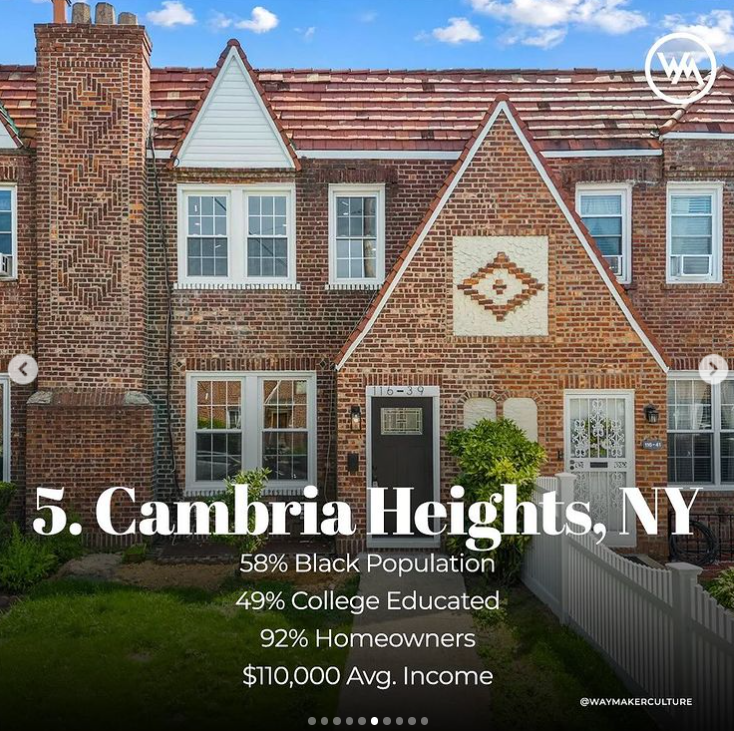
Located in Queens, New York, Cambria Heights is a quiet, densely populated neighborhood far removed from the bustle of the downtown Big Apple. Cambria Heights has a 58 percent Black population, mostly middle-aged and retirees. This lends credence to the fact that 92 percent of residents are homeowners.
The average income of Black Cambria Heights residents is just over $100,000 and almost half of them have a college degree. In fact, 36 percent of working residents work in the ‘C suite’ or other management professions.
Residents seem to enjoy the peace and tranquility of Cambria Heights. “Pretty safe and very family friendly.” describes one Cambria Heights resident, also highlighting the “well-kept” streets and sidewalks.
4. Olympia Fields, Illinois.
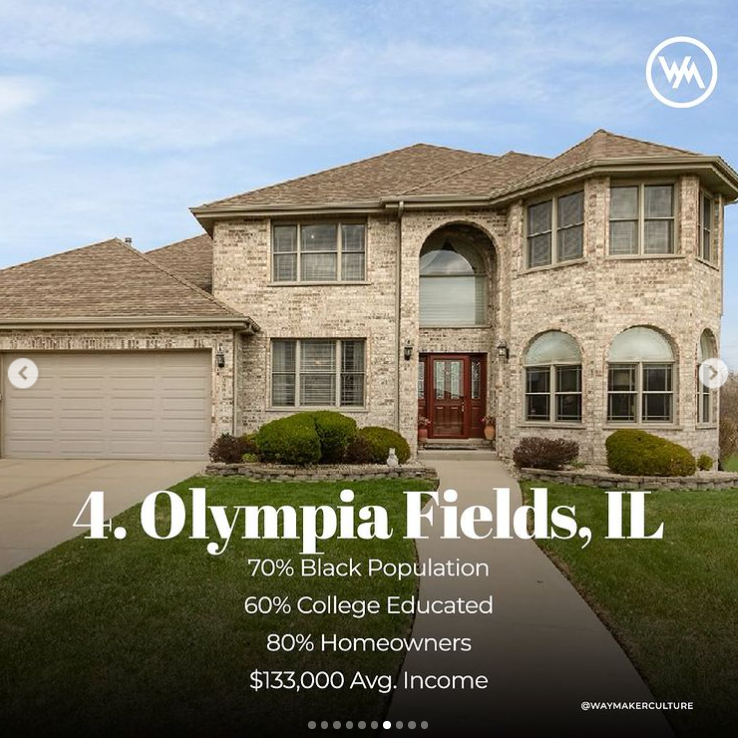
Situated outside of Chicago, this tiny Olympia Fields suburb touts a population of just over 4,500, with 70 percent Black population. With an average income of $133,000, 80 percent of black Olympia Fields residents own their homes.
The majority of Olympia Fields residents work in white collar jobs - 90 percent to be exact - and 60 percent of Black white collar workers are college educated. Residents describe Olympia Fields as a clean, health-oriented, friendly village and “a great place to raise a family.”
3. Washington, D.C.
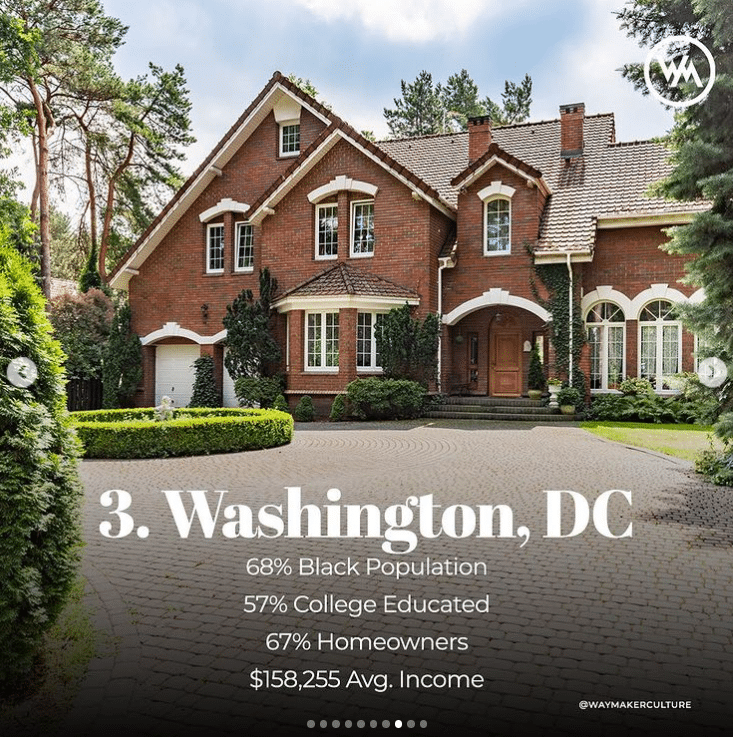
Known as the “Chocolate City”, Washington, D.C. is well known for its Black culture, from the rhythmic drums of Go-Go music down to its famed Mumbo Sauce. Sadly, like many other Black enclaves in America, Black residents are being displaced by wealthy white residents via gentrification.
But the Chocolate City hasn’t given up yet! Washington, D.C. still boasts a majority Black affluent population of 68 percent, with more than half of Black residents having completed a college education. Black homeownership in Washington D.C holds steady at 67 percent, with a whopping $158,255 average income.
Washington D.C. also is distinct in that it ranks in the top 25 healthiest cities and top five best cities for young professionals in America. This makes for plenty of varieties of restaurants and activities to engage in. One resident describes Washington, D.C. as “a big city experience but with a small town context”, citing late-night bars and dance clubs, shows, and a diverse atmosphere. Overall, Washington D.C. attracts young Black professionals who want to build a life around a melting pot of culture and activity.
2. Baldwin Hills, California.
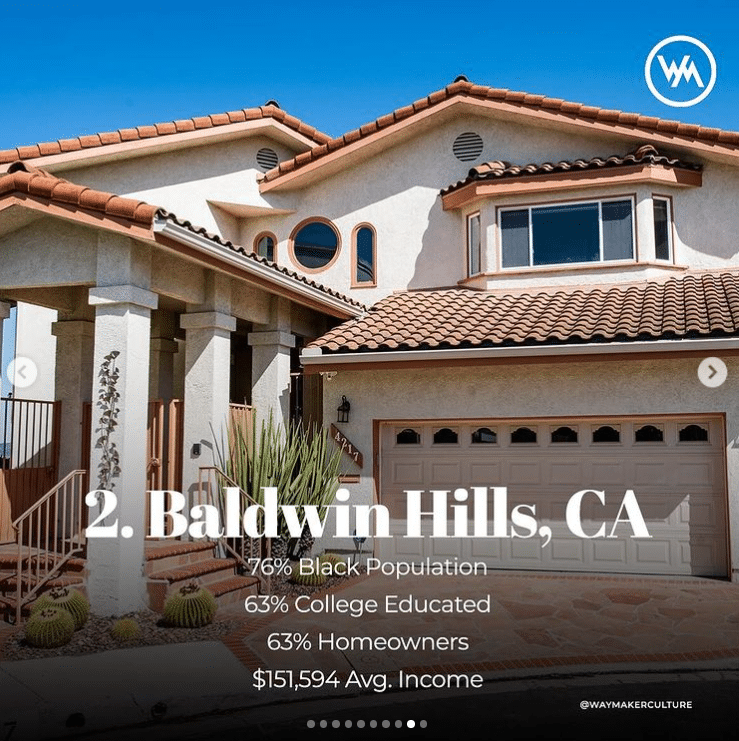
Deemed “the Black Beverly Hills”, Baldwin Hills has housed celebrities like Ray Charles and Tina Turner in the past - that should shed some light on the affluence of this neighborhood. Baldwin Hills' wealthy population is just over three-quarters Black, with a hefty yearly income of nearly $151,600!
Yet, even with a healthy amount of wealthy Black residents in Baldwin Hills, only 63 percent of them are homeowners. This is likely due to the nearly $100,000,000 price tag of homes in the community. The majority of residents - 67 percent - preferred to rent rather than own their homes.
As far as obtaining college degrees, 63 percent of Black residents have one, and many have white-collar careers as executives or in administration. Due to its location within Los Angeles, many Black residents travel shorter distances to jobs or other locations outside the neighborhood, with one resident stating the commute “is not too bad” but “can feel a bit scary” due to the conditions of its mass transit system.
1. Bowie, Maryland.
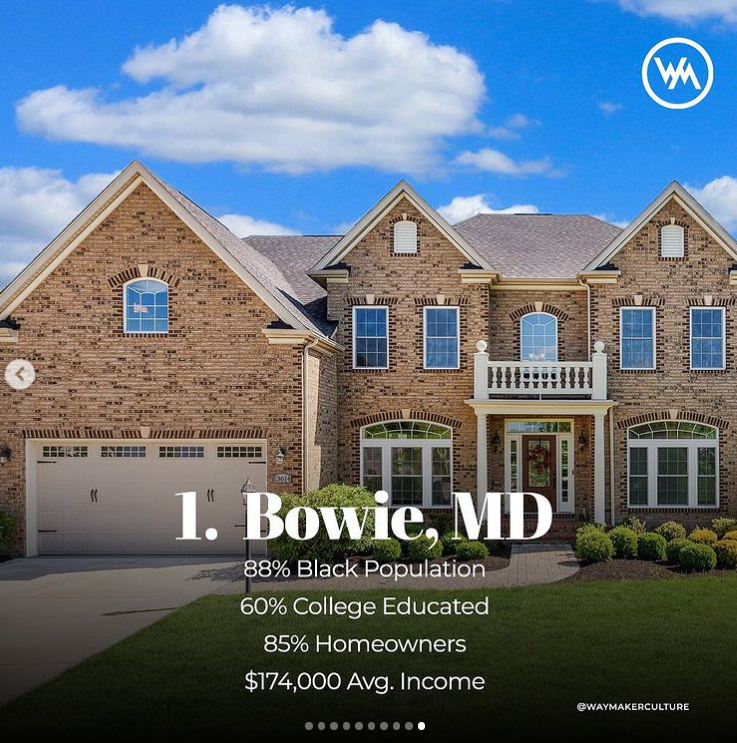
Bowie. The holy grail of Black affluence in America. Boasting a dominating 88 percent Black population, 60 percent of Bowie residents have a college degree, with many having the option to work from home.
With a staggering $174,000 average income, the majority of Black Bowie residents own their opulent homes - as many as 85 percent. Nestled in with the beautiful homes are plenty of parks, and the suburb is described as clean and virtually litter-free.
Residents also classify Bowie as relatively safe with a strong sense of community. “The city… encourages residents to attend a number of events.” states one resident. “Bowie provides me the opportunity to interact with people who have skin similar to mine.” shares another resident of Bowie. “It is a location where a community is developed.”
And there you have it. America’s wealthiest Black neighborhoods. Did any of your communities make the cut?









